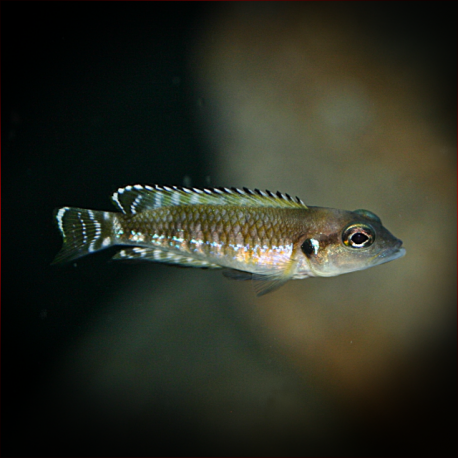More info
Datasheet
| Minimum Tank Size | 40 litres / 10.57 US gallons |
| Maximum Size | 6.5cm / 2.56inches |
| Temperature | 23°C / 73.40°F - 27°C / 80.60°F |
| Hardness | 8-25ºdH |
| pH | 7.5-9.0 |
General Description: The Lamprologus Speciosus, also known as the "black ocellatus," is closely related to L. ocellatus and is typically found cohabiting with L. stappersi. This species belongs to the Cichlidae family and can grow up to 6.5cm in size.
Aquarium Setup: For optimal aquarium setup, a tank of at least 40 litres is recommended with a sandy substrate and plenty of empty snail shells scattered around, more than the number of individual fish. The substrate should be deep as these cichlids enjoy digging. Water conditions should be hard, alkaline, with a pH between 7.5-9.0 and a temperature of 23-27°C.
Behaviour: Lamprologus Speciosus is territorial, particularly protective of its shell and immediate surroundings. They can coexist with other species, preferring companions like Neolamprologus brichardi, smaller Julidochromis species, and Cyprichromis. In colony situations, ensuring an adequate number of shells and more females than males is advisable to reduce aggression.
Feeding and Diet: These cichlids primarily feed on live and frozen foods, although they will also accept dried varieties. Offering a varied diet is essential for their overall health and vitality.
Reproduction & Dimorphism: Breeding Lamprologus Speciosus is relatively straightforward, as they are shell breeders. Setting up a separate aquarium for breeding is recommended with ample snail shells for egg-laying females. Males, significantly larger than females, fertilize the eggs inside the shells, with females caring for the brood until they become free-swimming.
Habitat and Distribution: Endemic to the south-western region of Lake Tanganyika, these cichlids inhabit sandy shorelines strewn with empty snail shells, creating a suitable environment for their territorial and breeding behaviors.

